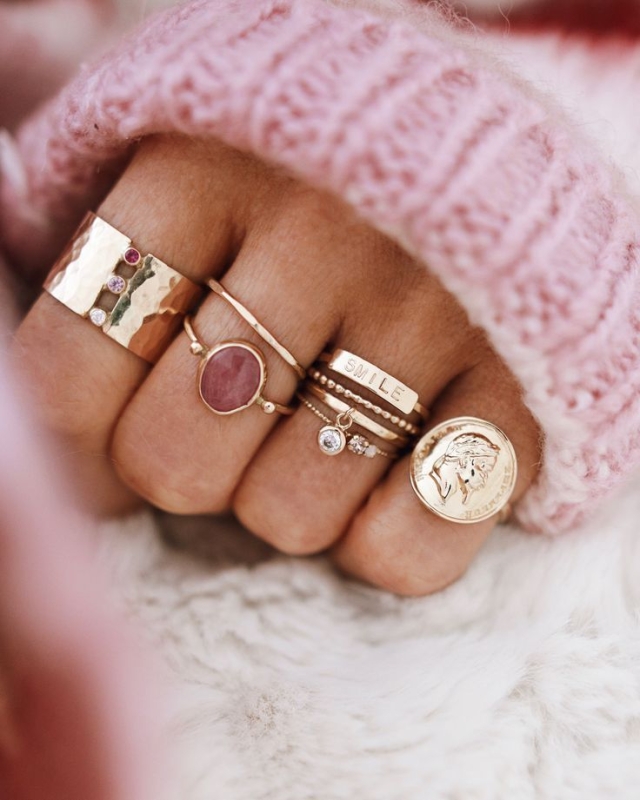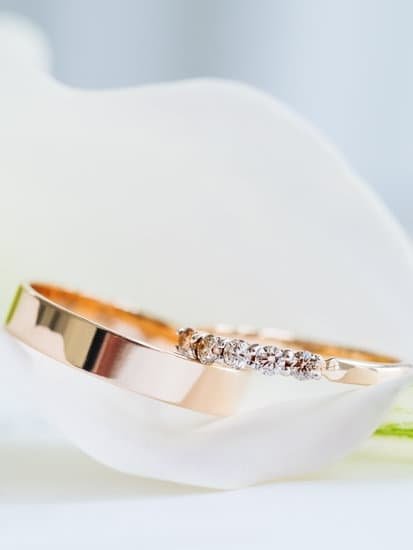Jewelry repair can be a daunting process for many, especially if it needs to occur from the comfort of one’s own home. However, with a certain set of steps, understanding the basics of jewelry repair may very well be possible. One such method is outlined below, detailing how to repair jewelry at home.
The first step for successfully repairing jewelry at home is to determine the exact nature and scope of damage. Is the jewelry broken in two cases? Does the plating need to be restored?
Answering these questions will give you more clarity on how much work needs to be done and what supplies are needed. Additionally, some materials like sterling silver components may require solvents in order to clean off tarnish before any repairs can take place. Moreover, safety equipment is also highly recommended; such as protective goggles when filing or soldering delicate pieces of jewelry because particles can fly into unprotected eyes causing serious damage.
Once all items are collected, it’s time for planning out an approach for making the repairs. It’s always better to assume that each project undertaken needs to adhere strictly to its instructions after which small changes and adjustments may be applied along with personal preferences (if available).
Further, accuracy and precision must play important parts while utilizing hand tools such as files and saw blades during shaping operations or a polishing motor during finishing operations respectively; too much pressure can cause unnecessary portion loss while too little will lead towards unsuccessful finishes and low accuracies respectively.
Overall this outline has helped guide readers through the process of repairing their own jewelry. With enough patience and caution following this simple guideline can help you save money whilst still being able to get your beloved piece back in perfect condition.
Essential Supplies for Jewelry Repair
Anyone looking to take on jewelry repair at home should make sure that they have the right supplies to do the job properly. The first thing to gather is a set of tools specifically designed for jewelry repairs, as regular tools can get damages and can even ruin certain materials. Pliers are essential to grab and twist settings as well as hold small findings while they are attached with loops or other fasteners.
Tweezers also come in handy for gripping pins, wiring, jump rings, beading, and more. A third set of needlenose pliers is good for making space adjustments from time to time as well. Hammering tools may also be necessary for reshaping bent items like rings or for flattening a wire form into desired shapes.
Cleaning Options
In addition to having the right tools, one should make sure they have cleaning options available. Cleaning jewelry is often an important step in repairing it due to tarnish and dirt buildup or because oxidation has taken place over time. Jewelry cleaners specifically made with silver or gold jewelry in mind can work best but vinegar diluted with water works well too when used correctly.
There are also some cleaning pastes available in stores that work great on brass or any kind of stones found in the jewelry piece being repaired. It’s important to review the specific instructions on each cleaner resulting from material type though because no two gems are created equal and require different methods of handling despite appearing similar on surface level.
Polishing Solutions
The final component of any good at-home jewelry repair starter kit should include polishing medications meant to buff out any scratches after a repair mission has been completed successfully along with cleaning agents from earlier steps so that tarnish does not begin manifesting again once the piece is put back into everyday use after all is said and done.
Diagnosing and Analyzing Jewelry Damage
When it comes to repairing jewelry at home, the first step is to properly diagnose and analyze the damage that the item has sustained. As a rule of thumb, the more complex the damage is, the less likely it is that you will be able to repair it yourself. When analyzing your jewelry for damage, look closely for any broken links in chains or settings that may have become bent out of shape.
If you notice any signs of corrosion or wear and tear on metal surfaces, this can also be indicative of a deeper problem with the overall integrity of course piece. Take meticulous notes and take detailed photographs of any damaged area so that moving forward with more invasive repairs has a solid starting point.
Jewelers Tools
Once you have identified and diagnosed the faults within your jewelry, you are now ready to take action by using the right tools for fixes specific problems. For basic repairs such as making replacement parts or re-shaping simple pieces, jewelers pliers are an essential part of toolkit needed for these types of repairs.
The right pair will be one with ergonomic grip which provides adequate comfort when manipulating tiny parts; some even come with extra attachments such as grooving tools in order to produce detailed shaping results. Soldering irons are another important tool that can be used in order to mend broken soldered pieces back together by melting both pins and their connecting joints together again so they can hold up under light pressure once more.
Advanced Repairs & Professional Guidance
If after analyzing all available repair options available to you at home do not yield successful results due to complexity of damage caused; seeking advice from a professional who specialized in custom jewerly repairs may be best solution in order achieve positive outcome from situation.
Most jewelers will offer free estimates on cost associated with restoring piece its previous condition as well provide guidance how best proceed when attempting perform specific difficult fix yourself if applicable cost factor plays role decision making process here.
In worst case scenarios where too much time has been spent trying mend afflicted item without success then unfortunately replacing lost valuable may only way regain original form beauty once owned but most times learning proper repair techniques through professional help paired accurate assessment job required reduces chances having replace entire object all together.
Preparing the Jewelry for Repair
Repairing jewelry at home can be a daunting process. Before attempting to repair the jewelry there are certain tips that should be followed to ensure both safety and success. The first step is to prepare the piece of jewelry before beginning repair.
The metal should be cleaned with a cleaning solution to remove any dirt or tarnish left on the metal. As well, it is important to inspect the piece for any existing damage such as stones that have become loose or knicks in the metalwork. If there is existing damage, this should be noted so that it can also be addressed during the repair process.
Carefully Remove and/or Replace Stones
The next step for repairing jewelry at home is carefully removing or replacing stones as needed. This requires tools such as tweezers, pliers, and clasps specifically designed for working with jewelry stones and metals.
It is important to use tools that are in good condition to prevent further damage from occurring during removal or replacement of the stones. Taking care not to overexert too much force when removing or replacingstones will also help prevent additional damage from occurring during this stage of the repair process.
Refinishing
The third step in repairing jewelry at home involves refinishing the piece of jewelry if necessary. Refinishing can help make a piece look brand new again by reducing scratches, removing tarnish, and fixing minor imperfections that may have occurred while removing or placing different pieces of the set together like soldering broken pieces back together with a soldering iron and solder wire if necessary.
Refinishing can also restore a worn out piece back to its original sparkle and shine. As with all steps involved in repairing jewelry at home, it is important to take extra care when using any type of polish or cleaner as this could cause permanent damage if used incorrectly or with too much pressure.
Simple Repairs
Jewelry repair can often seem daunting and difficult, whether it’s an heirloom family piece or a beloved necklace that you no longer wear until it is fixed. Fortunately, there are some simple ways to repair jewelry at home. Fastening backs, bails, and earring posts are common practices when learning how to fix jewelry.
One of the most common repairs is fastening a clasp on a necklace or bracelet. This is something that can be done with the help of common household tools such as pliers. Simply hold the two ends of the clasp together tightly and use the pliers to press them together until they are secure. It is also important to make sure that the clasps fit correctly before closing them completely so as not to risk damaging or breaking your jewelry.
Bails are small metal pieces that attach charms or pendants to necklaces or bracelets. Bails can come off easily if pulled too hard and become lost without much effort due to their small size. Using pliers, one can easily reattach a bail after replacing it in its proper place on the chain and securing it with pressure from the plier’s jaws.
Finally, when repairing earrings at home, you may want to pay special attention to both fixing any bent posts as well as adding new missing posts. For bent posts you may need some thick needle nose pliers along with a pair of regular jewelry pliers in order to straighten out any kinks in the post without further damaging the metal.
Finding replacement parts for these types of repairs may be more challenging but still possible depending on what kind of earring you have so be sure to measure exact sizes for consistency before selecting new components from your local craft store or specialized supplier online.
Complex Repairs, such as Replacing Stones and Prongs
When it comes to more advanced repairs such as replacing stones and prongs, it is best to contact a professional jeweler. Trying to replace a stone or prong on your own could lead to damaging the piece of jewelry beyond repair. Professional jewelers have specialized skills and tools that allow them to handle repairs that may look simple, but in fact require years of practice and precision workmanship.
They will be able to provide advice on what type of stone would be most suitable for the design, and if necessary they can even create custom settings or put together unique pieces from scratch. Furthermore, many professional jewelers are also able to repair vintage or antique pieces for which original replacement stones may not be available.
Moreover, the cost associated with having a professional jeweler take care of more complex repairs may actually turn out to be cheaper than trying it yourself – not only in terms of materials but also time and effort. Professional builders typically have better access to gems and metals as well as more efficient techniques than could ever replicate at home. This means everyone will typically save money by hiring professionals for these types of repairs.
Finally, another benefit of going through an experienced jeweler is being able to discuss any customizations that may need attend the repair process – such as updates on colors/metals/stones or adding a few other features like polishes/edges etc – all at affordable rates than were attempting it at home using one’s own techniques.
Professional jewelers are familiar with the latest trends and can offer valuable advice when it comes to making those aesthetics-oriented changes without compromising overall quality of the jewelry piece thereafter.
Finishing Touches
When it comes to jewelry repair, many follow the mantra, “Nothing beats professional help”. While that is often true, sometimes you can fix minor damage on your jewelry pieces at home easily and quickly. This saves you from having to visit a repair shop for something as insignificant as a broken clasp or loose stone. Below is an overview of what materials you will need and the steps that are involved in various types of jewelry repair jobs.
Buffing is a key step for giving your jewelry a good finish. This involves using a small brush to brush off any dirt or grime from the surface of the jewelry piece. You could use either a stiff bristled toothbrush (for harder surfaces), or even an old soft cloth such as an old t-shirt could be used on softer surfaces such as gold or silver plated items.
Keep in mind though, if there is severe damage or tarnishing, do not attempt to buff it up yourself. Seek out professional help instead.
Polishing is then used to bring out the true shine of your jewelry pieces. Start by using liquid non-abrasive polish which can be found at almost all craft stores or online retailers and apply it onto the surface of your jewelry with either a cotton cloth pad or soft brush (depending on how delicate the item is).
Then use either cloths specially made for polishing metal, flannel cloths, microfiber clothes or even old t-shirts can be used to further burnish and bring out their full luster and brilliance. In addition to helping restore brightness, polishing also helps protect against wear and tear, ensuring that you have long lasting articles of beautiful jewelry pieces now repaired at home.
You can also coat metal products with sealant glazing which helps add protection against rusting and oxidation – this will ensure long lasting results when wearing them outdoors in moist environments such as beach days by the sea side during holidays. Sealants come in distinct packages – simply follow instructions listed on them and apply accordingly afterwards following guidance from professionals whenever necessary.
And there you go – now you know how easy it is to repair most common kinds of damages done on jewellery pieces without breaking a sweat by doing repairs yourself at home.
Key Considerations
Jewelry repair is a profession that not everyone can do at home. However, there are basic methods to help you when attempting to fix your jewelry at home. Before attempting anything yourself, make sure that the jewelry item does not need professional attention and care.
If it does, contact a qualified jeweler for assistance. With the proper tools, some common sense and careful handiwork, you can perform basic repairs on your jewelry pieces. There are key considerations to keep in mind before repairing your jewelry at home:
Know Your Limitations – Be mindful of the limitations of what you’re able to do alone. Start with repairs that are small and simple. You don’t want to stretch yourself or risk damaging item beyond repair by trying something too complicated without any help or knowledge. Identifying an issue will help determine the best course of action and give you an understanding of what kind of repair is possible without risking further damage after attempting to fix it yourself.
Gather Necessary Tools – Have the necessary supplies on hand for whatever type of job you’ll be undertaking. The type of toolkit required depends largely on the repair being done, so consult manufacturers instructions if available prior to purchasing items such as glue, epoxy resin and wire types.
Making sure these supplies are in good condition will benefit even a novice doing small-scale repairs with greater efficiency while avoiding mistakes that may yield undesirable results due lack of proper tools or supplies.
Work Clean – Always work in an area where dust particles won’t settle into pieces as this could ruin fine details or cheaply made items which have limited durability outside their intended level use.
Take safety precautions such as wearing protective eyewear if necessary when using any sort of tool that produces sparks or heat during usage like soldering irons and blowtorches etc It is important to treat these with respect since they often can cause serious injury if handled inappropriately by a novice jewelers lacking proper experience handling such elements safely.
Keeping away from distractions ensures all parts come together as planned because poor concentration makes for poor results especially around delicate components like precious stones set within heavy solid pieces connecting several metals together simultaneously ( 18k whitegold being a classic example). Follow these general rules will increase chances that your DIY attempt at home repair turns out great.

Welcome to my jewelry blog! My name is Sarah and I am the owner of this blog.
I love making jewelry and sharing my creations with others.
So whether you’re someone who loves wearing jewelry yourself or simply enjoys learning about it, be sure to check out my blog for insightful posts on everything related to this exciting topic!





